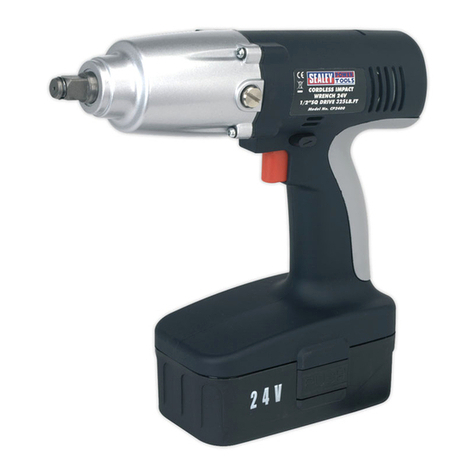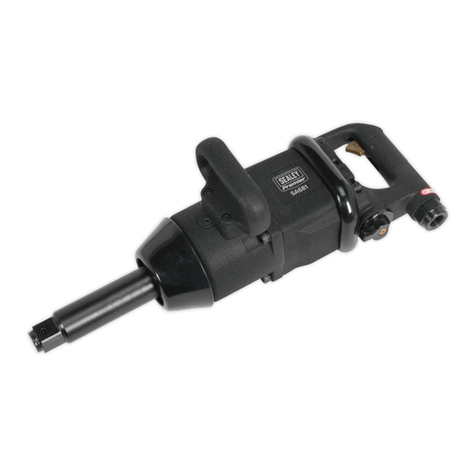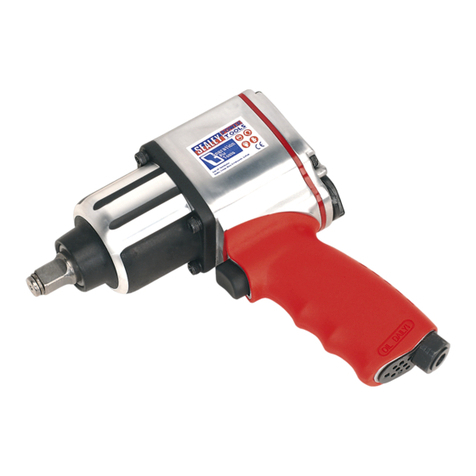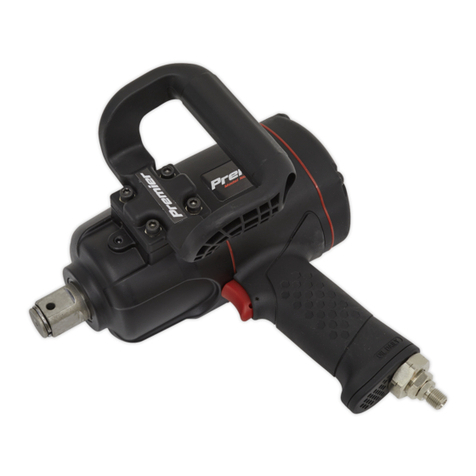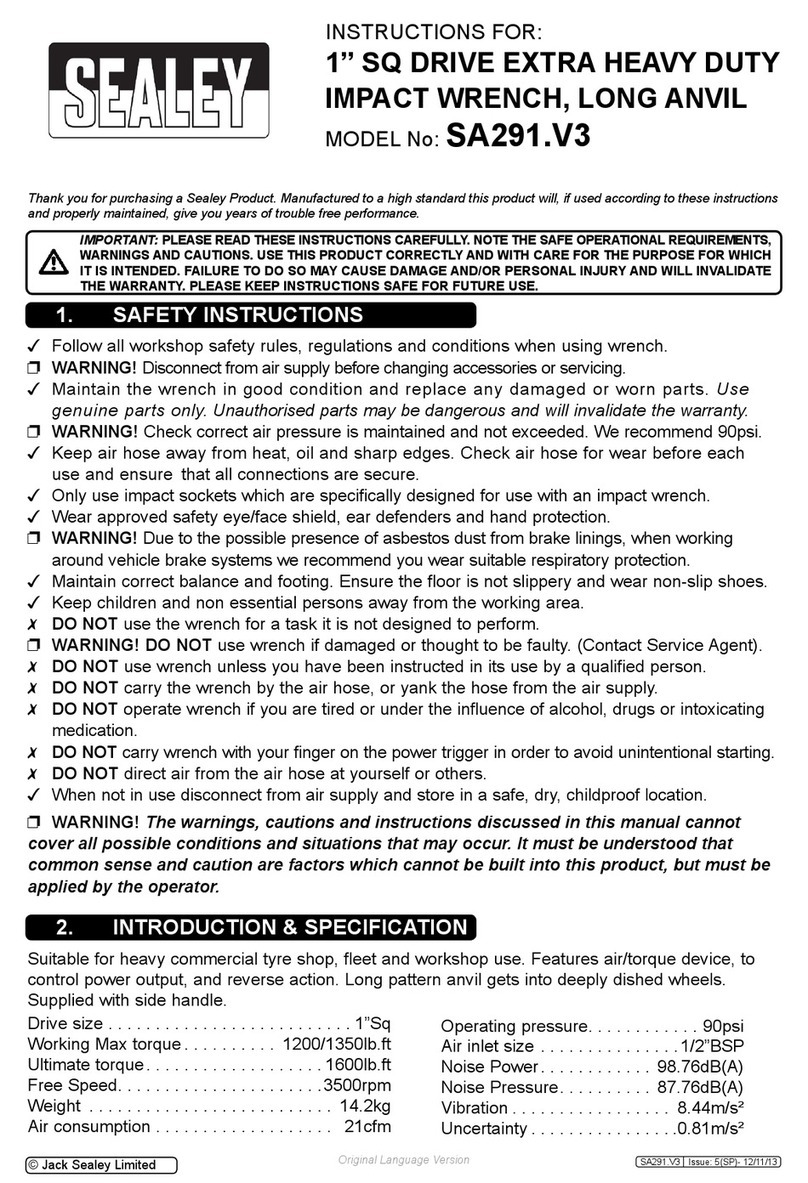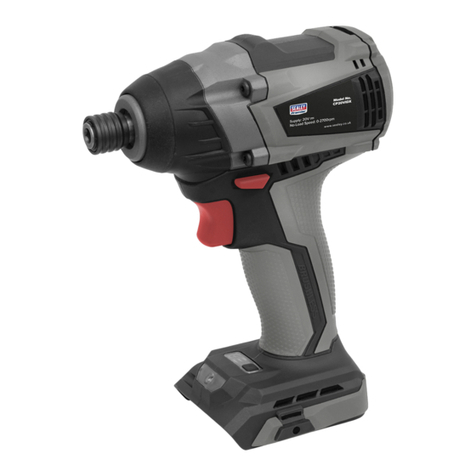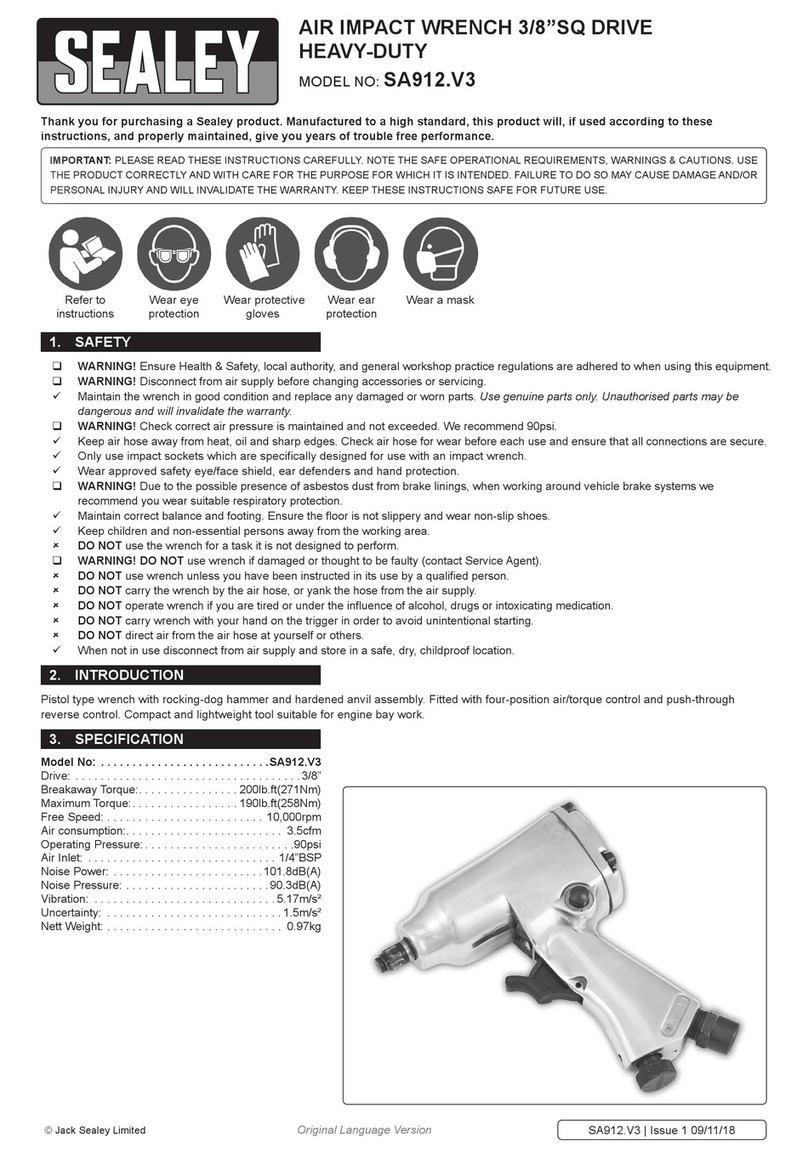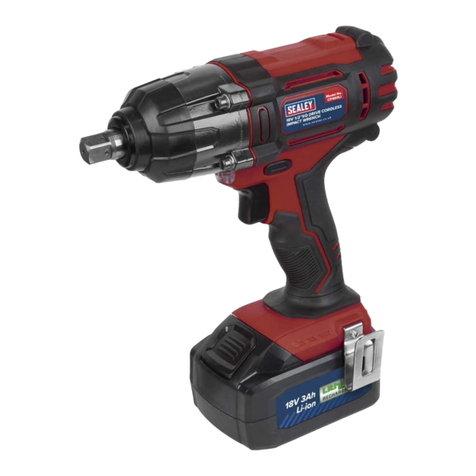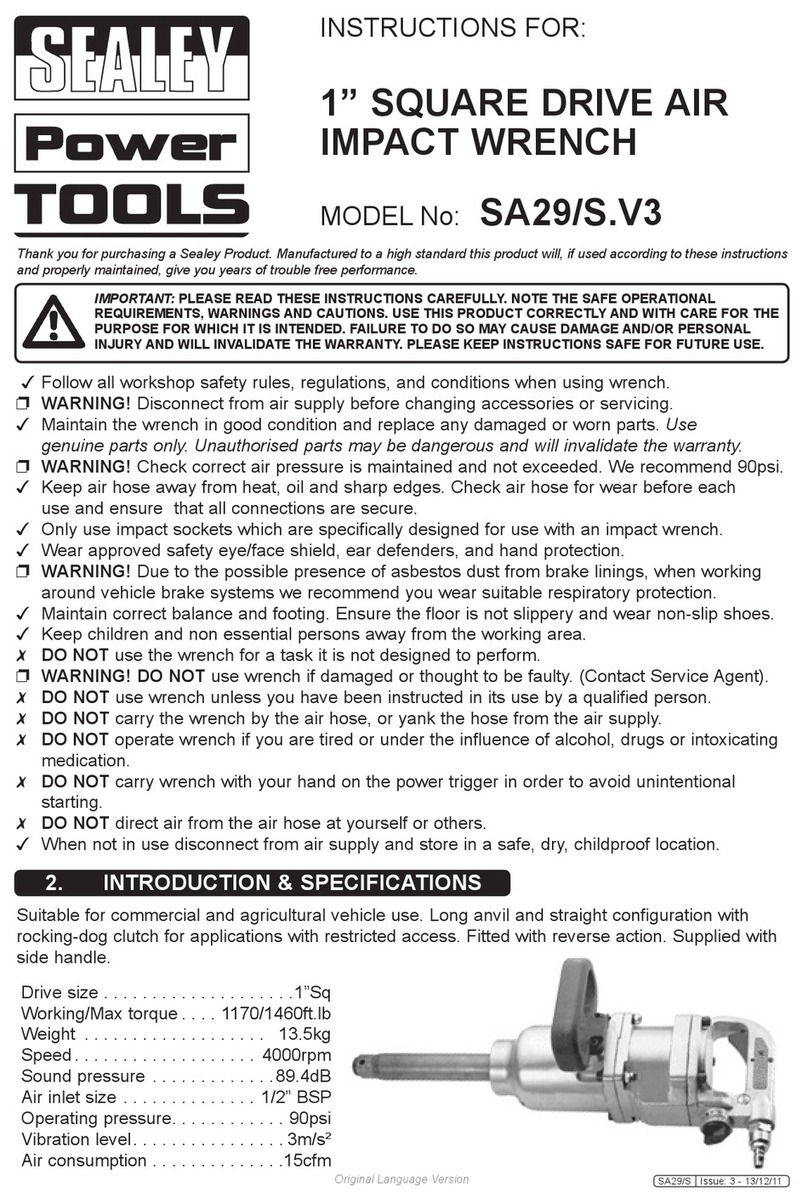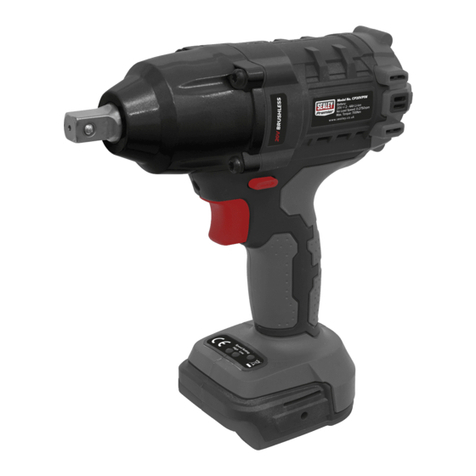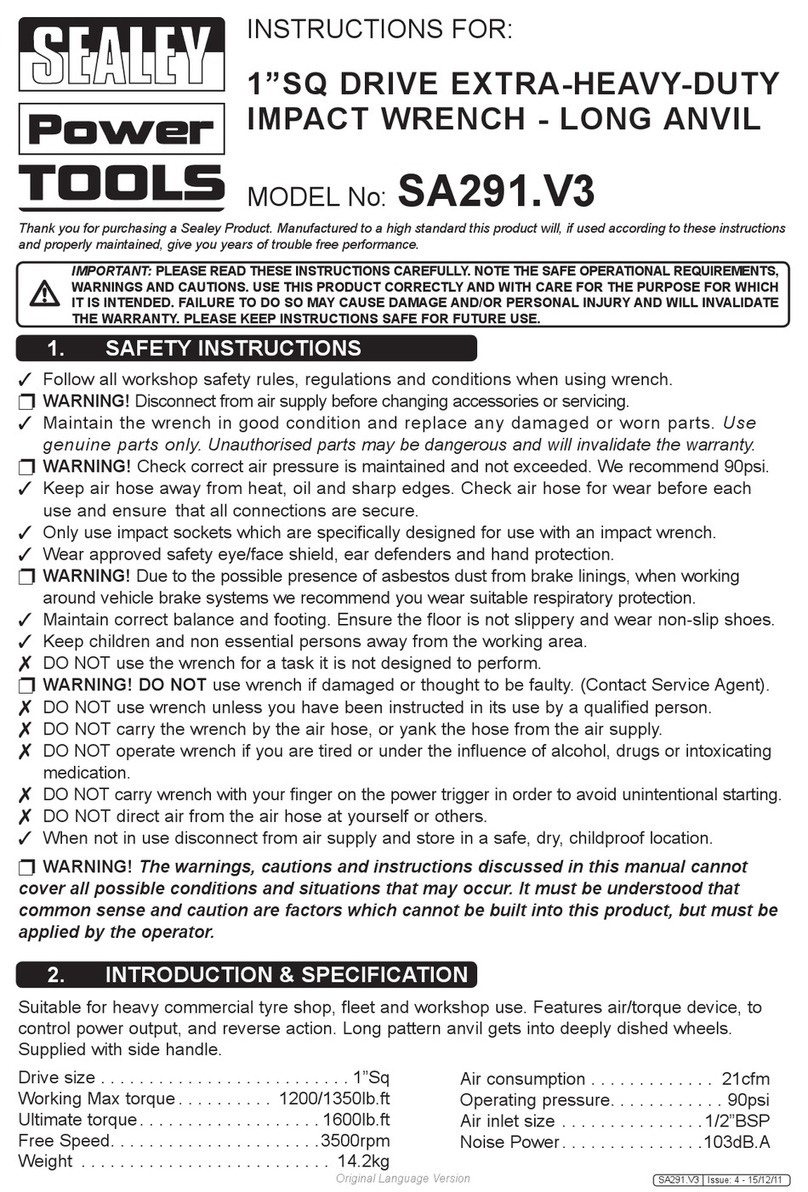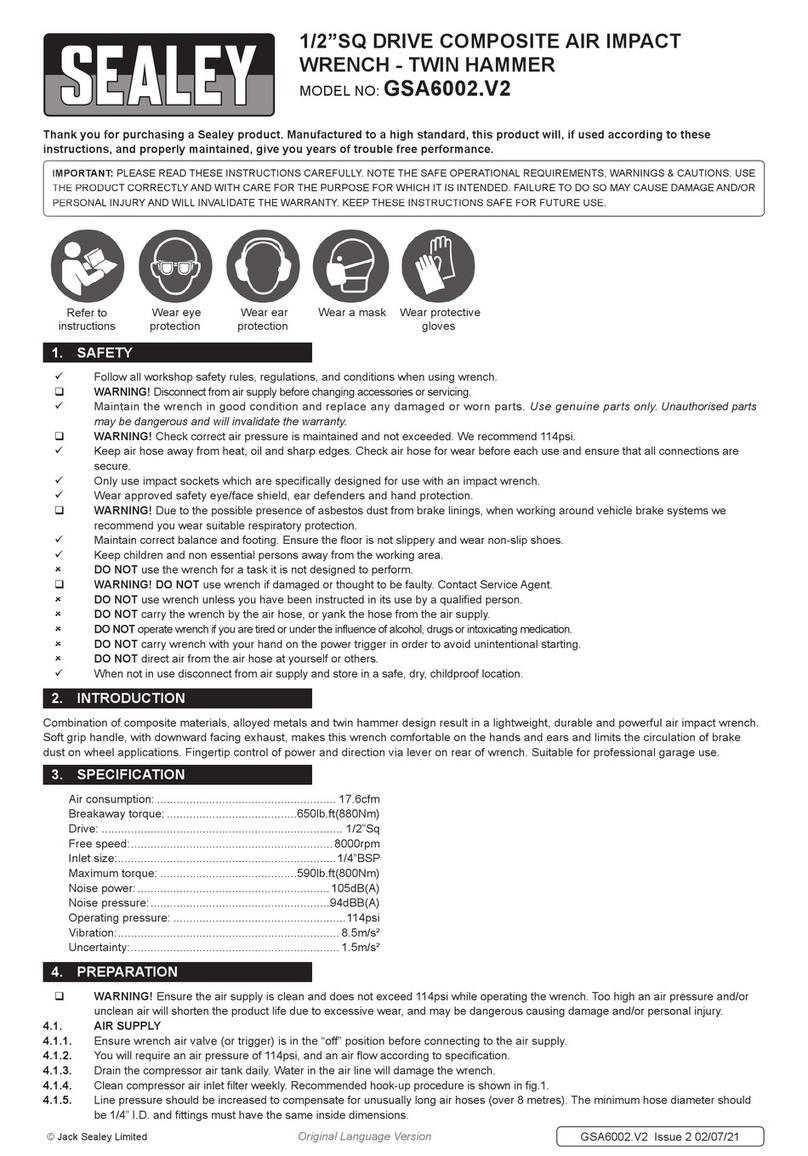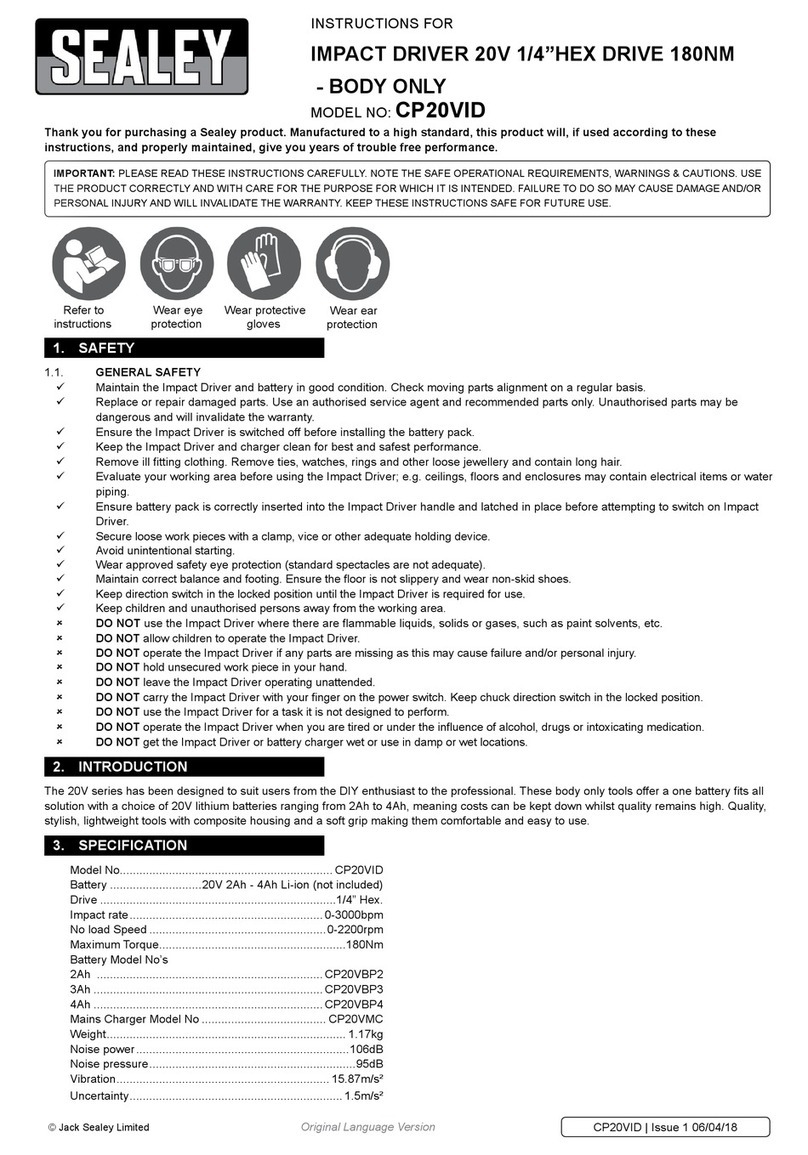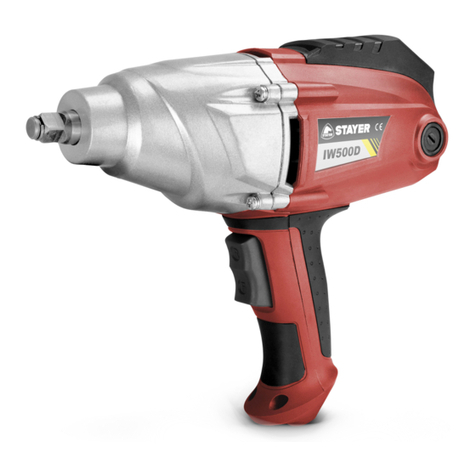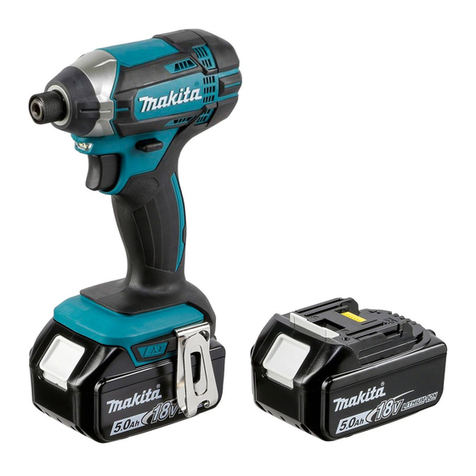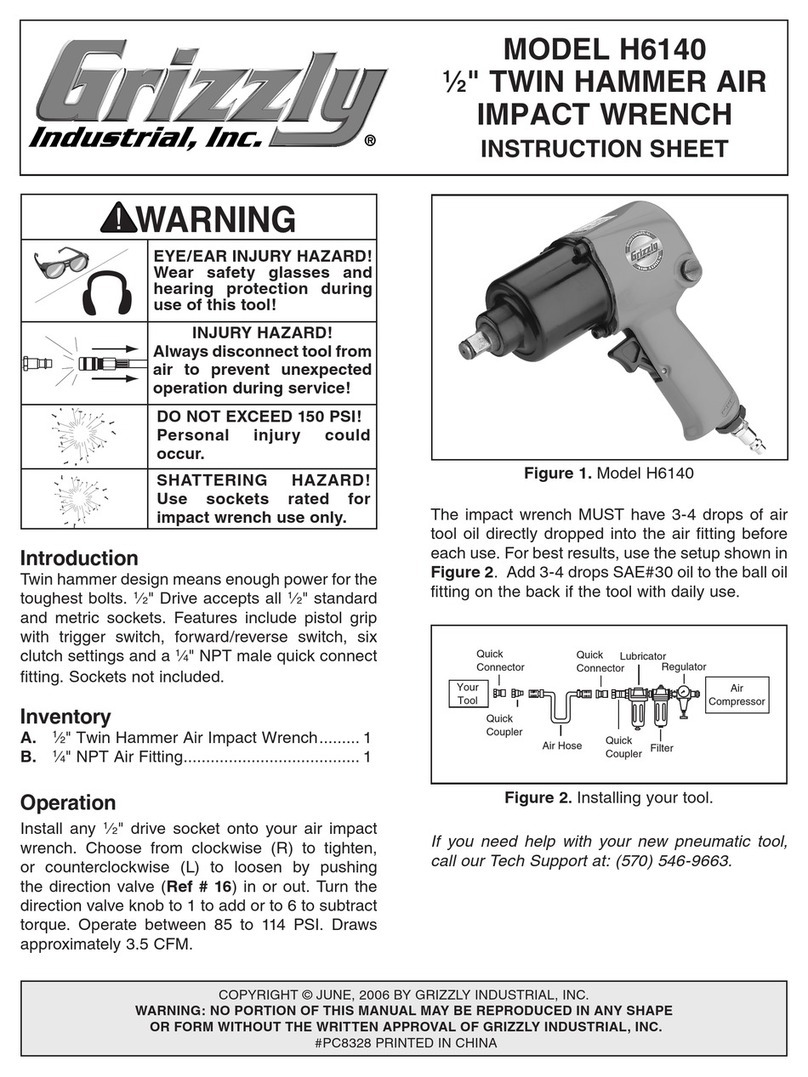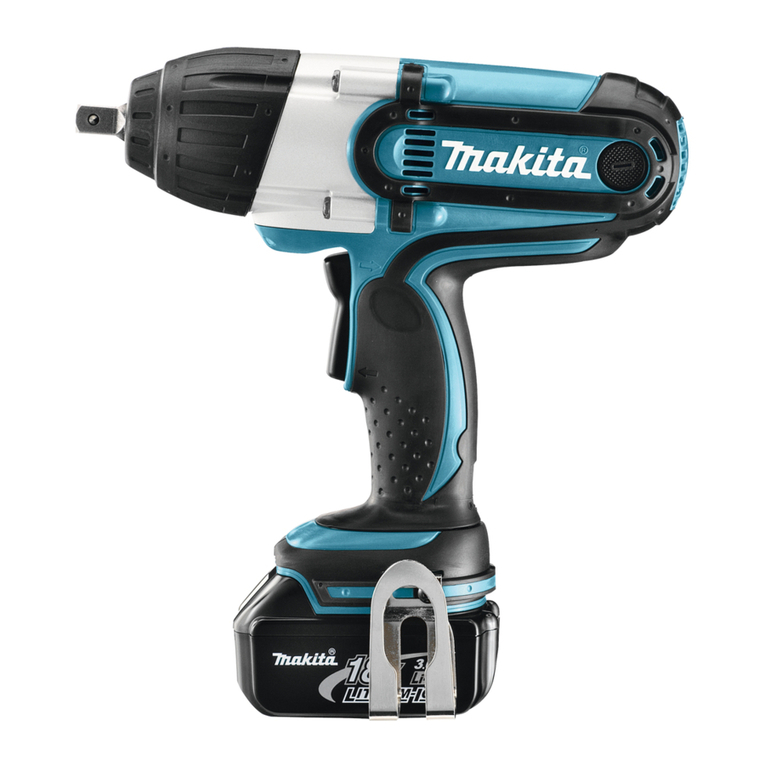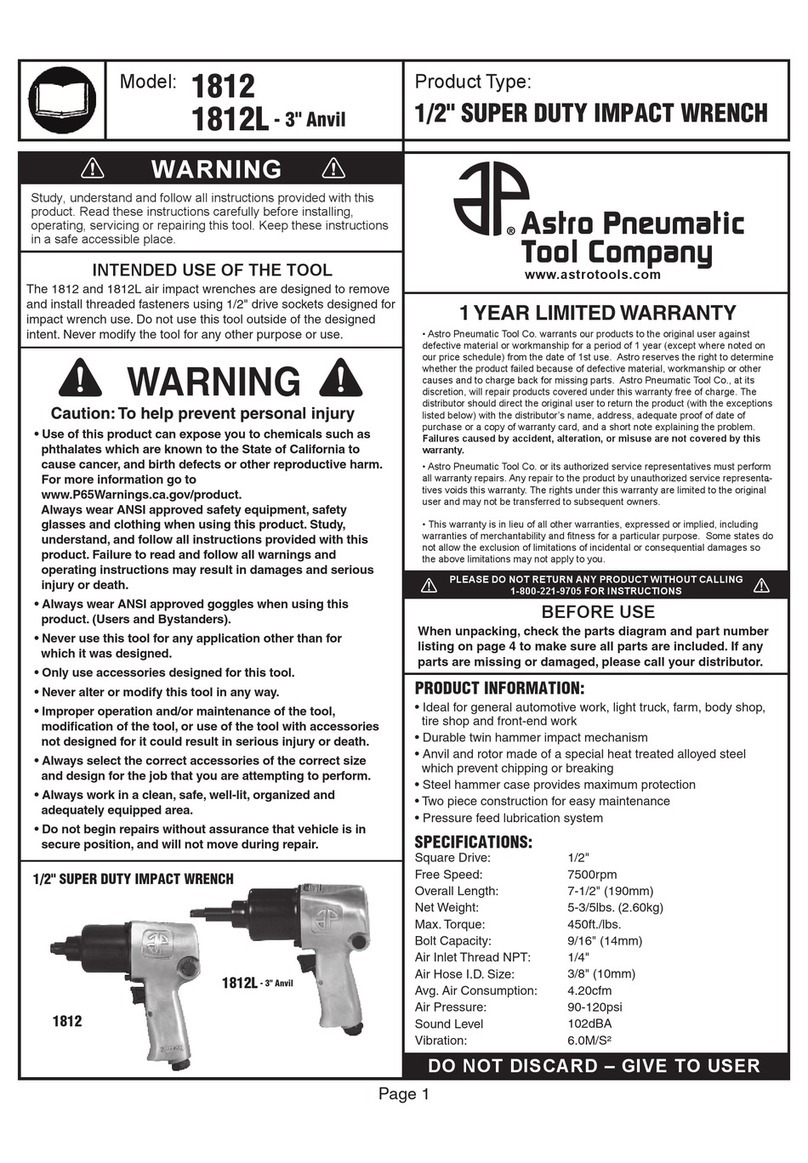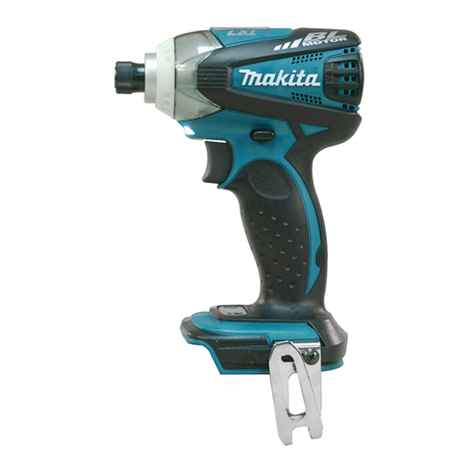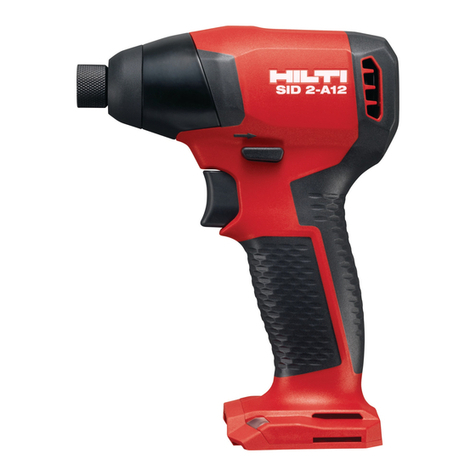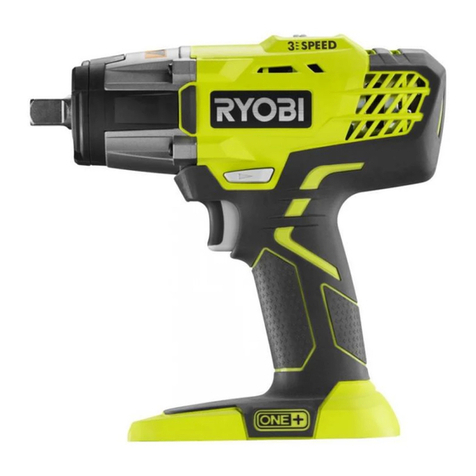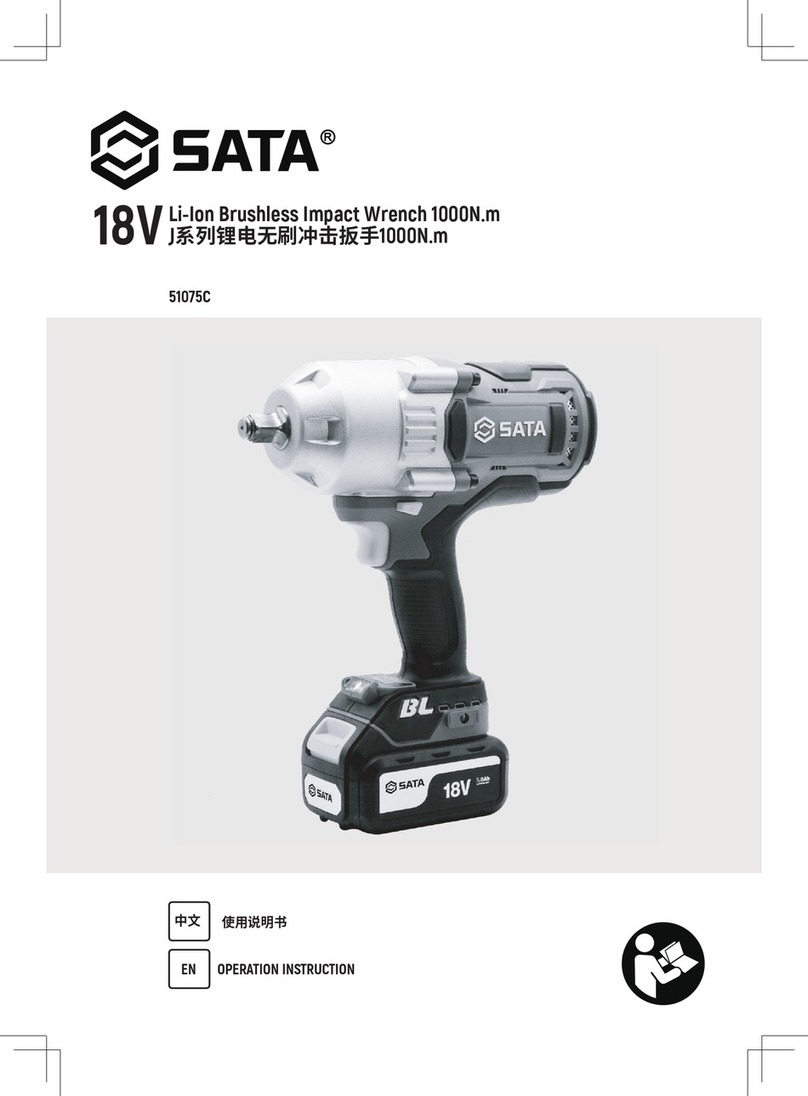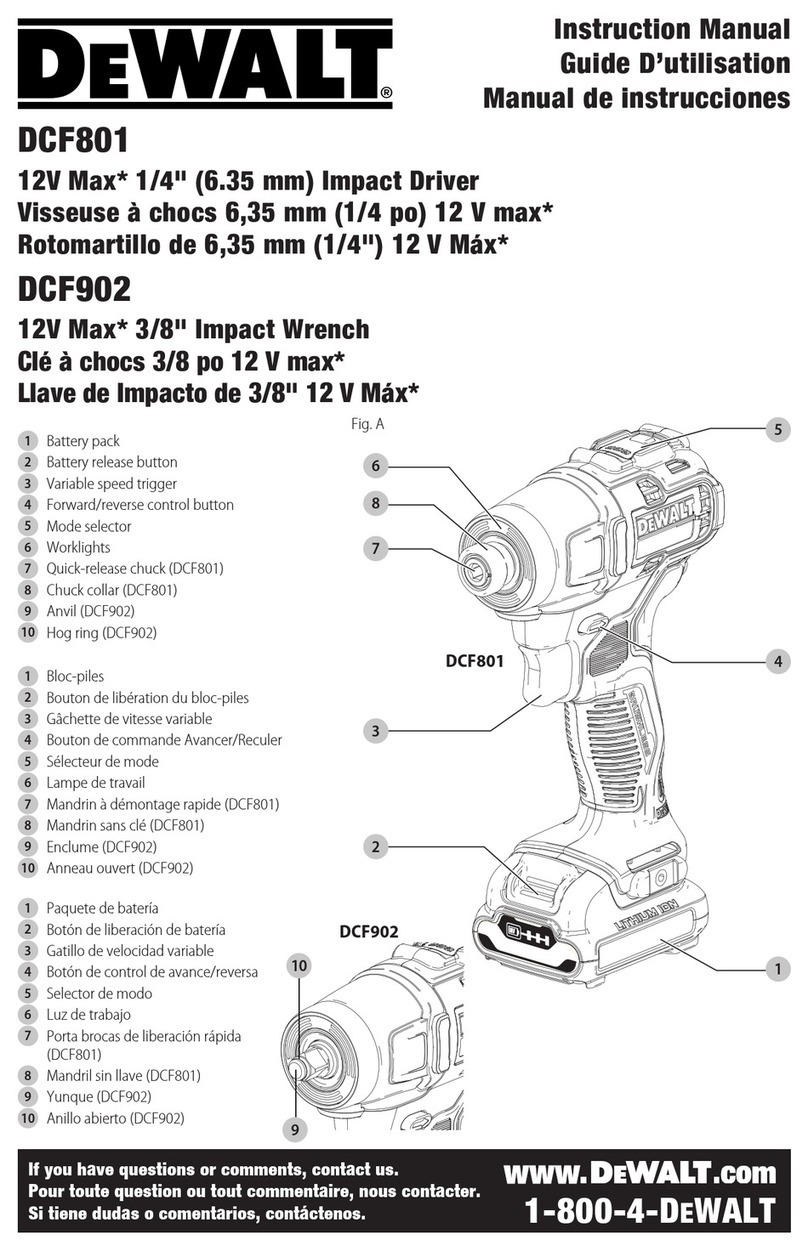
Electrical safety information, it is important that the following information is read and understood.
1.3.1. Ensure that the insulation on all cables and on the appliance is safe before connecting it to the power supply.
1.3.2. Regularly inspect power supply cables and plugs for wear or damage and check all connections to ensure that they are secure.
1.3.3. Important:Ensurethatthevoltageratingontheappliancesuitsthepowersupplytobeusedandthattheplugisttedwiththe
correct fuse - see fuse rating in these instructions.
8DO NOT pull or carry the appliance by the power cable.
8DO NOTpulltheplugfromthesocketbythecable.Removetheplugfromthesocketbymaintainingarmgripontheplug.
8DO NOT use worn or damaged cables, plugs or connectors. Ensure that any faulty item is repaired or replaced immediately by a
qualiedelectrician.
1.3.4. ThisproductisttedwithaBS1363/A13Amp3pinplug.
If the cable or plug is damaged during use, switch the electricity supply and remove from use.
ReplaceadamagedplugwithaBS1363/A13Amp3pinplug.Ifindoubtcontactaqualiedelectrician.
ClassIIproductsarewiredwithlive(brown)andneutral(blue)onlyaremarkedwiththeClassIIsymbol;
A)ConnecttheBROWNlivewiretotheliveterminal‘L’.
B)ConnecttheBLUEneutralwiretotheneutralterminal‘N’.
C)Afterwiring,checkthattherearenobarewiresandensurethatallwireshavebeencorrectlyconnected.
Ensurethatthecableoutersheathextendsinsidethecablerestraintandthattherestraintistight.
DO NOT connect either wire to the earth terminal.
Sealeyrecommendthatrepairsarecarriedoutbyaqualiedelectrician.
1.4. BATTERY CHARGER SAFETY INSTRUCTIONS
WARNING! DO NOTattempttochargeanybatteryotherthanthatsuppliedfortheriveter.Othertypesofbatteriesmayexplode!
9 Allmainselectricalsupplysafetyfeaturesmustbefollowedasdescribedin1.3above.
9Disconnect the charger from the mains supply when not in use.
8DO NOTchargebatteryifroomtemperatureisbelow10°C(50°F)orabove40°C(104°F).
8DO NOTexposethechargertodamporwetconditions.
8DO NOT pull or carry the charger by the power lead.
8DO NOT operate the charger if it has been dropped, or has received a sharp knock, or is damaged. Take the charger to an
authorised agent for repair or obtain a replacement.
8DO NOTdismantlethechargerasthismaycausedamageand/orpersonalinjuryandwillinvalidatethewarranty.
8DO NOTinsertforeignobjectsormaterialintotheholereservedforthebatterypack.
8DO NOTrechargeasecondbatterypackimmediatelyafterchargingtherst.Consecutivechargingwilloverheatthecharger.Allow
theunittocoolfor15minutesbeforechargingthenextpack.
8DO NOT attempt to connect two chargers together.
8 Storethechargerinthesamemannerasthebatterypackin1.2.
2. INTRODUCTION
Suitableforaluminium,steelandstainlesssteelrivetnutsfromM3toM10.Poweredbya18V3Ahlithium-ionbatterywithapullingforceofup
to14000N,capableofpullingupto500rivetsononefullcharge.Removingthenutadaptorallowsuseasanimpactdriverusingthe1/4”quick
releasebitholder.Suppliedwith6setsofpullingrodsandnuts,6HSSbitsfordrillingpilotholesand4socketswithhexagonconnections,1hr
mainschargerwithBSUKplug.Suppliedincarry-case.
3. SPECIFICATION
Model no: ......................................................................CP315
Pulling rods and nut sizes: ..............M3,M4,M5,M6,M8,M10
Drill sizes: ..................................................6,7,8,9,11,13mm
Nut driver sizes:.................................................7,8,10,13mm
Battery type: ...................................................... 18V3AhLi-ion
Maximumpullingforce: ................................................ 14000N
Maximumtorque:............................................340Nm(250lb.ft)
Replacement battery: ................................................CP315BP
Weight: .............................................................................1.5kg
Rivet nut types:.......................Aluminium, steel, stainless steel
Noise power: .................................................................. 100dB
Noise pressure: ................................................................ 89dB
Vibration: ...................................................................17.42m/s²
Uncertainty: .................................................................6.96m/s²
4. OPERATION
4.1. CHARGING
4.1.1. Plug the charger into the mains, the indicator will light green.
4.1.2. Insert the battery into the charger the indicator will turn red.
4.1.3. When the indicator light turns green charging is completed.
4.1.4. Switchoffthechargeratthemainssupplyandremovethebattery.
4.2. OPERATING SWITCH Refer to fig.1
4.2.1. Theswitchhasthreepositions:Middleposition-powerisdisconnected,Righthandposition(pushedfullythroughtotheright)the
riveterwillturninaanticlockwisedirection,Lefthandposition(pushedfullythroughtotheright)theriveterwillturninaclockwise
direction.
Original Language Version
©JackSealeyLimited
Recommended fuse rating
3 Amp
Fig.1
CP315|Issue:3(L)10/08/18
